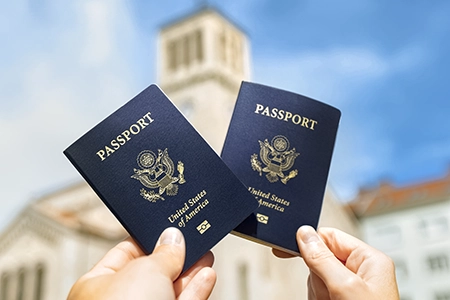As the world becomes increasingly interconnected, translation is no longer just about linguistic proficiency. It is about cultural intelligence (CQ) – the ability to navigate and respect the nuances of culture that language alone cannot convey. For translators, this means going beyond the mere conversion of text from one language to another. It means embracing the challenge of grappling with the complexities of legal documents, idiomatic expressions, and technical texts and doing so with a deep appreciation for the diversity and richness of human culture.
Cultural Context: The Unseen Framework of Language
Language is a powerful tool that carries with it the weight of culture, shaped by the history, values, and beliefs of its speakers. Possessing cultural intelligence allows us to tap into this invisible framework, unlocking the true meaning and potential of any text. In the realm of legal documents, this is especially crucial, as each term can hold implications deeply rooted in the legal system of the source language. By understanding and utilizing cultural intelligence, we can choose the correct terms in the target language that uphold the integrity and essence of the original document.
The Legal Lexicon and Cultural Nuances
Legal language is a specialized terminology deeply rooted in the legal system of a society. It not only represents the law but also the cultural and historical influences that have shaped it over time. When translating legal documents, a translator’s cultural intelligence is crucial to navigating this complex terrain. Legal terms that are commonly used in one culture might be completely absent or have different meanings in another. For example, the concept of “common law” in English-speaking countries has no direct equivalent in civil law systems, which are prevalent in many non-English-speaking regions. Therefore, a culturally intelligent translator must have a comprehensive understanding of these legal systems and the socio-cultural factors that impact them to ensure that the translation is legally sound and culturally appropriate.
Interpreting Cultural Idioms in Legal Language
Legal documents can pose a formidable challenge for translations due to the presence of idiomatic language that carries immense cultural significance. These idioms, such as metaphors and analogies, are often indispensable for comprehending the essence of the law. A translator with cultural intelligence should be adept at interpreting these idioms accurately, providing a translation that captures the original’s nuanced meaning. This is particularly crucial in case law, where precedents set in one cultural context may serve as references in another. The translator must effectively communicate the essence of these legal idioms without losing the cultural context that makes them so significant.
Translating for Cultural Compatibility
When translating legal documents, it is crucial to ensure cultural compatibility. This requires not only linguistic accuracy but also cultural congruity. A translator must be aware of the cultural attitudes towards legal processes, authority, and obligations. For example, the meaning of privacy in one culture may differ from another, which can impact everything from the wording of contracts to the interpretation of legal rights. A translator with high cultural intelligence will recognize these differences and produce a translation that respects the cultural context of the target audience while remaining faithful to the original text’s legal intent.
Non-Verbal Cues and Local Customs: Reading Between the Lines
Cultural intelligence involves not only understanding language but also the non-verbal cues and local customs that are intertwined with it. In many cultures, how something is communicated is just as important as what is communicated. This is where cultural intelligence becomes crucial. For instance, when translating idiomatic expressions, a translator must have a deep understanding of the attitudes and experiences that give rise to such phrases. It’s not just about choosing the right words; it’s about capturing the sentiment and ensuring that it resonates with the target audience in a culturally coherent way.
Decoding the Silent Language of Gestures
In any form of communication, nonverbal cues can be just as important as spoken words, if not more so. By paying attention to gestures, facial expressions, and body language, we can gain a deeper understanding of the message being conveyed. Don’t underestimate the power of nonverbal communication – it can often reveal more than what is being said aloud. These silent cues can vary significantly across cultures and have the potential to create confusion or misunderstanding if not interpreted correctly. For instance, nodding may indicate consent in one country but disagreement in another. As a translator, it’s vital to have a keen understanding of these cultural nuances and their impact on communication. When dealing with texts that reference nonverbal cues, the translator must skillfully convey these subtleties through words, ensuring that the translation maintains the integrity of the original communication. Culturally sensitive and intelligent handling of such translations is crucial to avoid any misinterpretation or miscommunication.
Honouring Local Customs and Etiquette
Local customs and etiquette play a significant role in our daily lives. They have a profound influence on language and communication and dictate not only our behaviour but also the way we express ourselves. When translating, it’s essential to acknowledge and respect these customs to avoid misunderstandings or causing offence. For example, the level of formality in a business letter can vary greatly between cultures. In some cultures, an informal tone is viewed as friendly and approachable, while in others, it may be considered disrespectful. A translator who has a high level of cultural intelligence will be able to identify and adapt to these cultural expectations, ensuring that the translation is not only linguistically accurate but also culturally appropriate and respectful.
Technical Texts: Bridging the Cultural Divide in Specialized Knowledge
Translating technical texts poses a unique challenge as it requires a combination of cultural intelligence and technical expertise. Specific terms and concepts that are commonly used in one country may be unfamiliar or may have different meanings in another. A translator with a high level of cultural intelligence can recognize these differences and bridge the gap, ensuring that the translation is not only accurate but also easily understandable by the target audience, keeping in mind their familiarity with the subject matter. It is crucial to consider the audience’s knowledge and understanding of the subject matter when translating technical texts.
Grasping the Cultural Specificity of Technical Terminology
Technical terms often stem from a particular cultural and developmental context. For example, medical, engineering, or IT terms may have been created in one specific language and then later adopted globally, with or without modification. To ensure proper use of these terms in the target language, a translator must have an understanding of their origin and evolution. This understanding is crucial in fields such as healthcare or engineering, where precision is of the utmost importance, as the misuse of technical terms could lead to confusion or even danger. The translator’s cultural intelligence is vital in discerning when to keep the original term when to look for a direct equivalent, or when to provide an explanatory translation to make the term understandable to a non-specialist audience.
Navigating Cultural Assumptions in Technical Communication
Technical fields have their own set of assumptions and practices that may not be immediately apparent to those outside of that culture. For instance, the conventions in a technical manual or scientific paper, like the use of passive voice, the structure of argumentation, or the presentation of data, can vary significantly. A translator who possesses high cultural intelligence will be perceptive to these customs and will be able to alter the text in a way that aligns with the target audience’s expectations while still conveying the original’s intent and content.
Localizing Measurements and Data for Relevance
Technical texts are often filled with measurements, data, and references that are specific to a particular region or standard. The job of a translator is to go beyond simply converting units of measurement from imperial to metric and to localize these elements in order to ensure their relevance and usability. This includes adapting examples, case studies, and references to local contexts. The translator’s cultural intelligence guides them in selecting equivalents that are meaningful to the target audience and informs them when such localization is necessary. By carefully localizing the text, the translation is not only accurate but it is also practical and relevant to the user’s cultural and geographical context.
Addressing Legal and Safety Standards Across Cultures
Technical translations often involve products or services that will be used in different regulatory environments. As a result, a translator must be familiar with the legal and safety standards that apply to the target culture. Safety warnings, usage instructions, and legal disclaimers must be translated in a way that is not only grammatically correct but also complies with local laws and norms. A translator’s cultural intelligence plays an essential role in this aspect. They must grasp and accurately convey the implications of such standards, ensuring that the translated text is appropriate for its intended use and audience.
Final Word on Cultural Intelligence in Translation
Translation is not just about language proficiency but also about cultural intelligence. This means that translators need to not only translate words accurately but also ensure that the intended meaning and cultural context are adequately conveyed. Translation should be more than just a transactional task; it should be transformative, promoting communication, education, and connection. As globalization increases the demand for translation, it becomes crucial for translators to possess cultural intelligence to navigate the complexities of language and culture.
Further Reading On Cultural Intelligence in Translation
- Cultural Intelligence: What Is It and How Can It Effectively Be Measured?, Robert J. Sternberg, Ilaria Siriner, Jaime Oh, and Chak Haang Wong
Follow Us on Your Favourite Social Network




